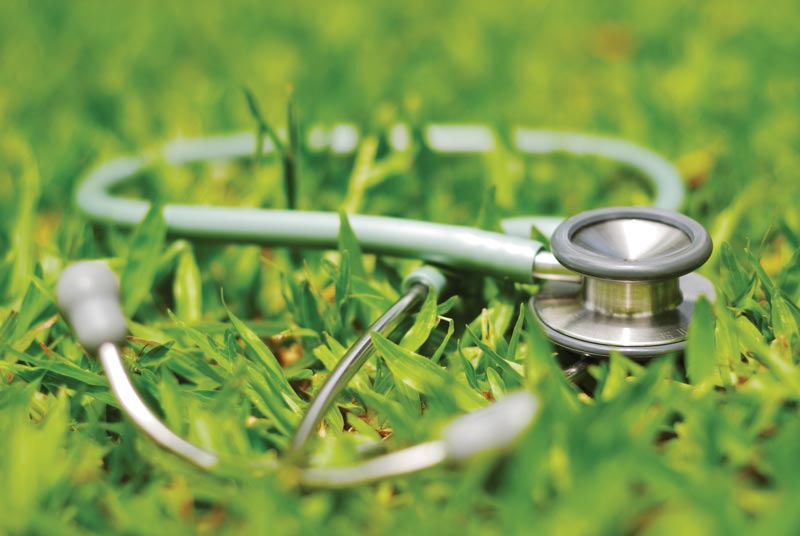
Integrated disease management strategies for golf courses depend on an understanding of the abundance of pathogenic bacteria and fungi in the agroecosystem. The fungus Sclerotinia homoeocarpa (now Clarireedia spp.), which causes dollar spot disease worldwide, is the most economically damaging disease of turfgrass in the northern United States.
Most studies of microbial abundance have focused on the soil layer. This collaborative study between Elisha Allan-Perkins and Geunhwa Jung of the Stockbridge School of Agriculture, University of Massachusetts, Amherst, Mass., and Daniel Manter of the USDA, Fort Collins, Colo., is among the first to evaluate the amount of bacteria and particularly the amount of fungi in all three layers of turfgrass: the canopy (grass blades), the thatch (layer of decaying grass blades under the canopy) and the soil.
As reported in Phytobiomes, an open-access journal of The American Phytopathological Society, researchers measured both bacteria and fungi in the distinct turfgrass layers using a quantitative DNA-based method (qPCR) that is more sensitive than other culturing techniques. Samples were obtained in May and September from three golf courses within 10 kilometers of each other, each of which used a different pesticide regime (conventional, organic, or a hybrid of conventional and organic).
Research findings, presented in the paper Abundance of Bacteria, Fungi, and Sclerotinia homoeocarpa in the Thatch and Soil of Golf Courses, indicate there is a higher number of S. homoeocarpa in the thatch as compared with the soil. Surprisingly, no differences in the abundance of this fungus were observed among the pesticide management treatment areas of each golf course — putting greens, fairways and rough — even though putting greens receive more fungicide applications than either the fairway or the rough.
Fungicides, which represent the majority of chemical budgets on golf courses, should reduce the inoculum of S. homoeocarpa. However, results of this study do not support that hypothesis, as there were similar inoculum levels of this fungi found in all management areas despite the different amounts and types of fungicides applied.
Intriguingly, there was significantly more S. homoeocarpa present in September on the fairways of the conventionally managed course, which corresponded to an increased observance of dollar spot infection centers. However, no obvious infection centers were found on either the conventionally managed putting greens or rough, or on any of the sample locations of the other two golf courses.
These findings demonstrate the need for further research into the biology of S. homoeocarpa, especially the ability of different fungicides to kill the fungus within the thatch layer.
This research also has implications for future study of microbial communities on golf courses as well as in similar agricultural ecosystems such as biofuel grasses, forest ecosystems, forage systems and fields with high crop residues. An increased understanding of the environmental factors influencing host-pathogenic microbe interactions should lead to the development of more effective integrated pesticide management strategies.